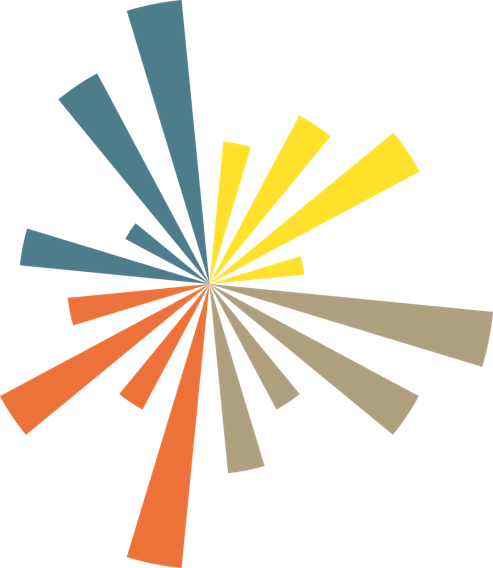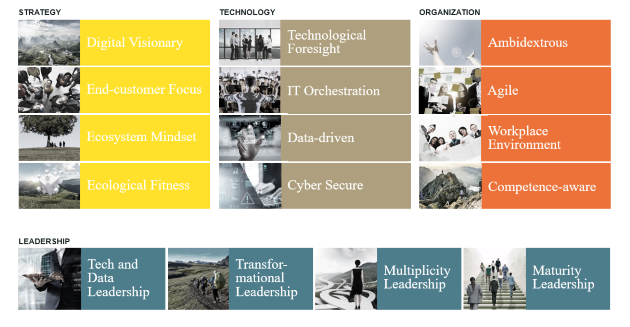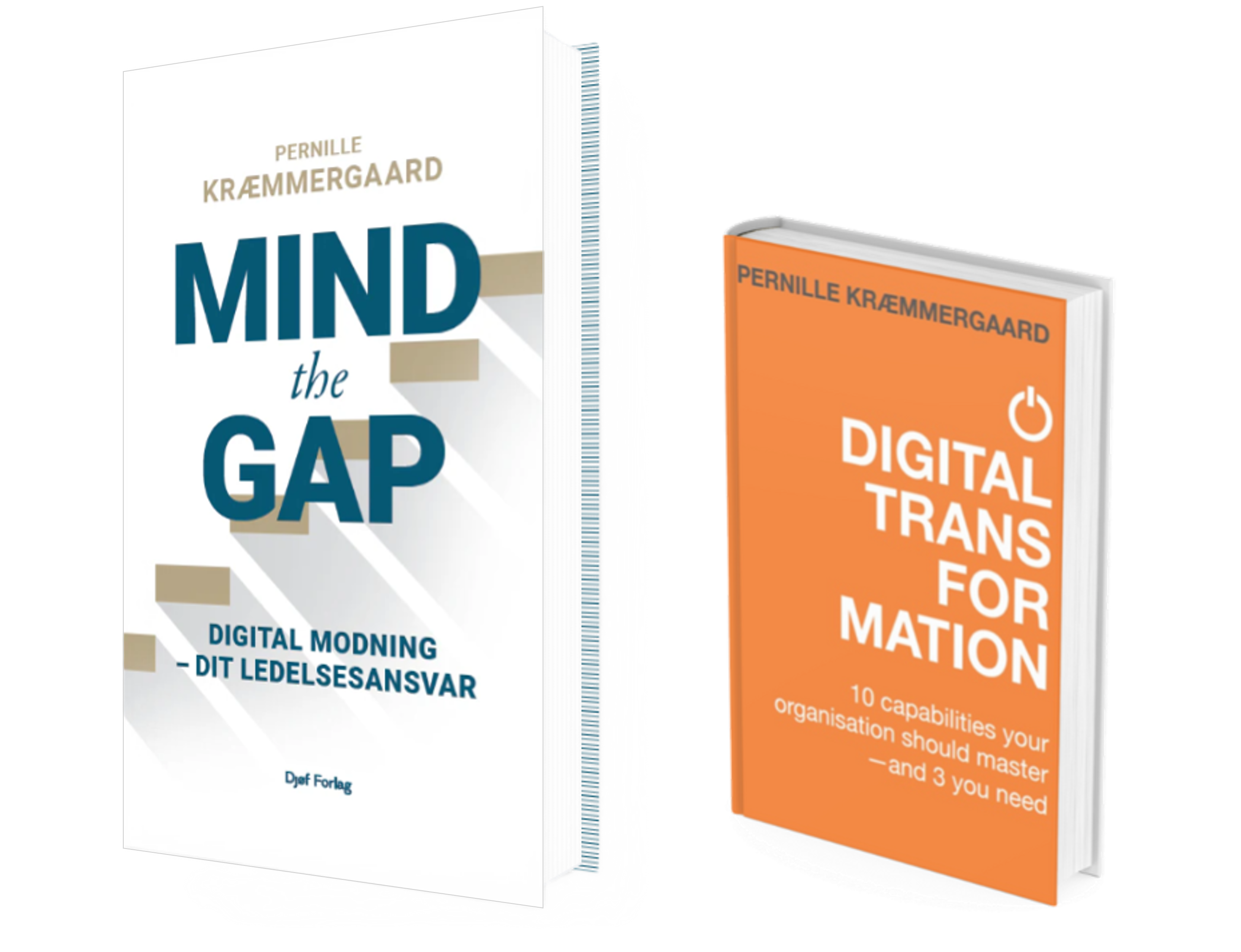
The 4x4 capabilities have been developed based on Pernille Kræmmergaard's research and practical experience over more than two decades.
The Organizational Capabilities Framework is an attempt to convey the capabilities in such a concrete way that you can work with them - without going into the smallest details.
Most importantly, you will realize how necessary it is to master these capabilities. What do you and your business need to be able to do to create a better solution for customers and to compete in an ever-changing and competitive environment? Perhaps you want a better understanding and overview of where your business is right now?

What does your company need to master in order to execute the digital maturation you want? What does this require in terms of your strategies? What does it require of you as a company? And of the leadership? These are the questions the Organizational Capabilities framework answers.
Digital maturity requires capabilities in the four areas: Strategy, Technology, Organization and Leadership, as shown in the figure. As you mature, new capabilities are added, while others become less crucial. But you're always building on top of what's already there, so what you've learned doesn't stop being relevant.
You can use the Organizational Capabilities Tool to explore the 4x4 capabilities you need to succeed with digital transformation in generations four, five and six.
If you're curious if our tools are right for you and your organization, you can order a free access and try the tool.
Addresses the impact of digital and technological developments on the future livelihood of the company or organization, its relations with customers and partners.

Digital Visionary means that the organization can assess the unpredictable and dynamic digital and competitive landscape - and rethink the business model and organization to be relevant in 10 years.

End-customer Focus means that the organization is aware of the basic needs that each end-customer wants to have met and is able to meet those needs in a way that meets the end-customer's changing demands and expectations.

Ecosystem Mindset means that the organization values and is able to engage in mutually rewarding partnerships where value is created and shared, and sees this as essential to strategic success.

Ecological Fitness means that the organization is able to adapt its strategies, technologies, organizational and management practices to current and future demands and expectations
Is about understanding the impact of technologies, IT platforms, and data management on the business's current and future opportunities.

Technological Foresight means that the organization constantly and systematically monitors, evaluates and applies technological developments and digital trends to solve problems for the organization, customers, end customers, business, etc.

IT Orchestration means being both rock solid internally and flexible externally with an awareness of how the IT architecture is and can be designed, suitable decision-making structures and the role of the IT department

Data-driven means that the organization can lead, manage, capture, use and present many types of data as an organizational and strategic resource - and establishes the right data governance.

Cyber Secure means that the organization considers cybersecurity a critical business issue and a competitive differentiator and has effective security measures, technologies and guidelines in place to protect against cyber attacks
Looks at changes in the organization, how work is organized, and the relationship with and the framework for employees.

Ambidextrous means that the organization can simultaneously leverage and improve the existing and explore new and create change, and that the right structures and management practices are in place for both.

Agile means that the organization can be agile and adaptable, while empowering cross-functional teams to make decisions, with a focus on creating value and a widespread acceptance of being in beta.

Workplace Environment means being aware of and attentive to the technological, physical, cultural and structural environment that the organization offers employees and whether it is up-to-date and attractive.

Competency-aware means continuously developing the mindset and competencies of managers and employees, recruiting the right people to fit the organization's current and future digital maturity, visions, and business models.
Deals with what managers need to master in addition to general management competencies in order to lead in an increasingly digital environment.

Tech and Data Leadership means that management understands the potential of technologies, assesses their strategic importance and ensures the development of necessary skills to comply with data, IT and cyber security policies.

Transformational Leadership means making the purpose of digital transformation meaningful to employees and creating a burning desire to be part of a development with many unknowns, also for yourself.

Multiplicity Leadership means being able to maneuver in multiple realities and with multiple bottom lines, where standard solutions don't work, and where everyone expects individual consideration and sustainable practices.

Maturity Leadership means being able to assess the organization's current and future desirable digital maturity, identify the gap between existing and future required capabilities and competencies, define necessary steps to achieve the set goals, and implement metrics to track and adjust progress.
What you have just read is a brief introduction to the capabilities required for Digital Transformation. These have been developed based on Pernille Kræmmergaard's international academic research over a period of more than 25 years, as well as practical experience from hundreds of courses and workshops with private companies and public organizations.
The 13 capabilities are described in depth in the book "Digital transformation - 10 capabilities your organization must master - and 3 that you need" from 2019.
The capabilities Ecological Fitness, Cybersecurity and Maturity Leadership are presented in "Mind the Gap. Digital Maturation - Your Leadership Responsibility" from 2024.
The books are intended as a user guide for leaders at all levels.
Buy Digital Transformation - 10 skills your organization must master - and 3 that you need
Buy Mind the Gap
We also recommend our Organizational Capabilities Tool
